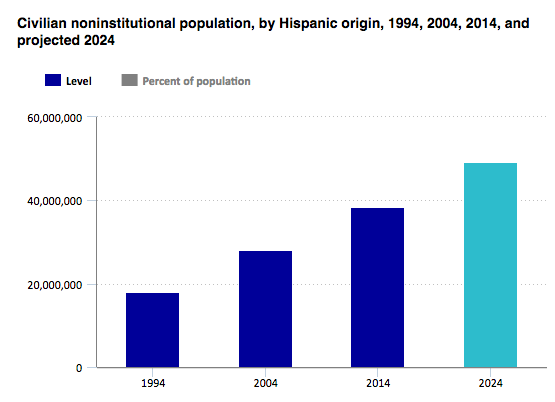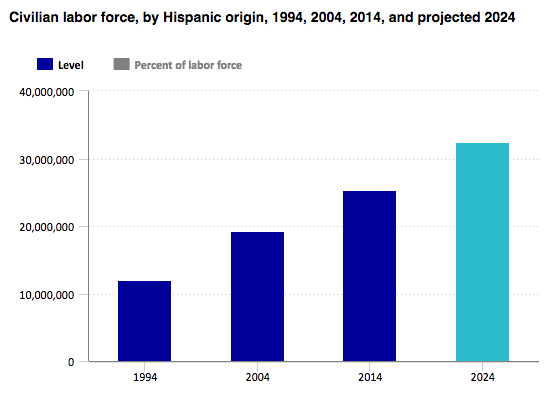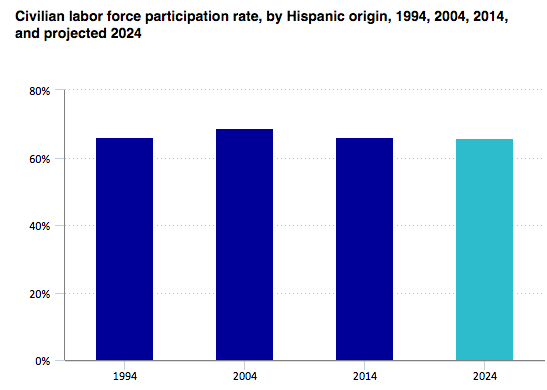Hispanics will make up nearly 20 percent of the labor force in 2024
In 2014, the Hispanic labor force had risen to 25.4 million workers, 16.3 percent of the total U.S. labor force.
In observation of Hispanic Heritage month, which runs every year from September 15 through October 15, The Economics Daily takes a look at some labor force statistics for Hispanic Americans.
The Hispanic share of the labor force is expected to increase more than that of any other demographic group, because of both overall population growth (from higher births and increased immigration) and higher labor force participation rates. Over the 2004–14 decade, the Hispanic civilian noninstitutional population grew at an average annual rate of 3.2 percent.

As the Hispanic population continues to increase at faster rates, so does the group’s labor force. The Hispanic labor force was nearly 12.0 million in 1994, 19.3 million in 2004, and 25.4 million in 2014. BLS projects that it will reach 32.5 million in 2024, increasing the share of Hispanics in the total labor force over the next decade. In 2004, Hispanics were 13.1 percent of the labor force, a share that increased to 16.3 percent in 2014. BLS projects that Hispanics will make up nearly 20 percent of the labor force in 2024.

The Hispanic labor force participation rate was 66.1 percent in 1994 and increased by 2.5 percentage points, to 68.6 percent by 2004. The 2007–09 recession brought about falling participation rates for all race and ethnic groups, including Hispanics, whose labor force participation rate returned to the 1994 level of 66.1 percent in 2014.
The labor force participation rate of Hispanics is projected to decrease slightly by 2024. Hispanic men historically have had a higher labor force participation rate than non-Hispanic men. Hispanic women, by contrast, have had a lower participation than non-Hispanic women. The high labor force participation rate of Hispanic men reflects, in part, their age structure: Hispanics have a younger population than non-Hispanic groups, with a greater proportion at the ages of higher labor force participation.

Click here to visit the U.S. Dept. of Labor website and access more information and interactive versions of the above charts.















